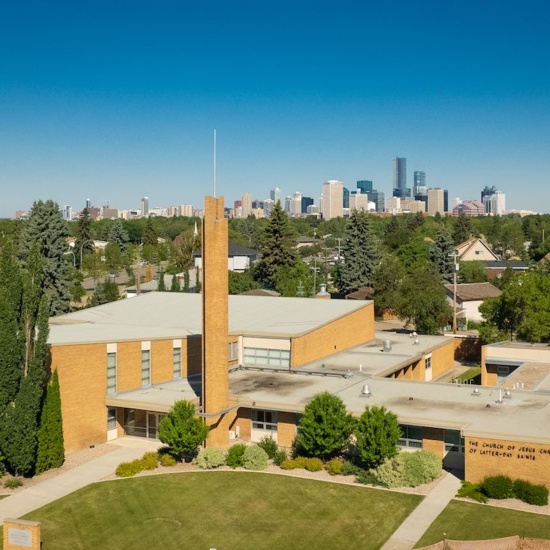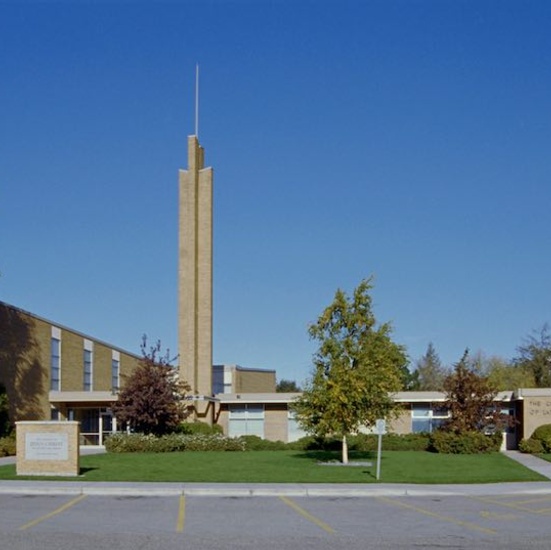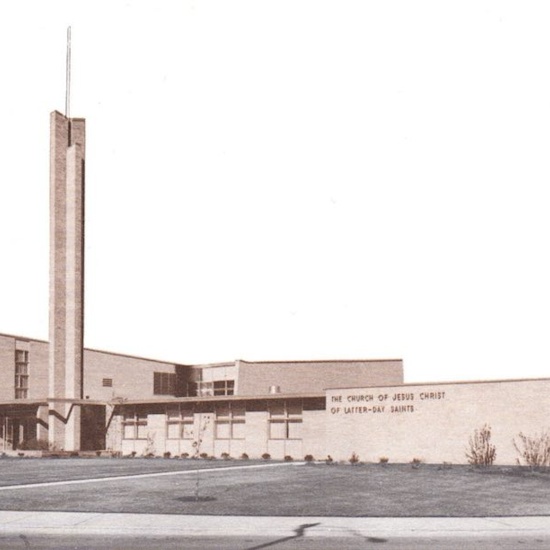Edmonton Stake Centre
What is the purpose of a house of worship? For the adherent, it is a place for devotion, praise, learning, and community.
What is the purpose of a house of worship? For the adherent, it is a place for devotion, praise, learning, and community.
For the visitor, the building’s purpose is to be inviting. For people who might never go inside, a house of worship should be a visual amenity and an expression of values that can be broadly respected.
The Edmonton Stake Centre, now commonly known as the Bonnie Doon Stake Centre, excellently fulfils these various purposes. It has comfortably served congregations of the Church of Jesus Christ of Latter-day Saints for over sixty years. It presents a welcoming face at a prominent south-side intersection and is a notable local example of Modern ecclesiastical architecture.
After World War II, the City of Edmonton replotted old gridded (and largely unbuilt) subdivisions to create school-centred neighbourhood units surrounded by arterial roadways. A 1953 subdivision that established right-of-way for a portion of Connors Road also created a 2.0 acre (0.8 ha) property at the southern tip of Strathearn. Latter-day Saints bought the property in 1955. For the era, this was a very large site for a church. It lent itself to a building with a significant footprint.
The Book of Isaiah compares God’s followers to an expanding tent. As it enlarges, the tent’s cords need to be lengthened and held firmly by stakes driven deeply into the ground. In the 19th century, the Church of Jesus Christ of Latter-day Saints began using Isaiah’s imagery to refer to a grouping of congregations in a particular location (comparable to a diocese) as a “stake.” The first stake in the Edmonton area was established in 1960, when there were five Latter-day Saint congregations in the city.
For the headquarters of this stake and to house some of its congregations, the Church began building on the Strathearn property. The groundbreaking took place in April 1960. Robert Litchfield, the construction supervisor, organized building trades and volunteer labour from church members. The first Sunday meetings were held in the building on June 4, 1961 and the structure was dedicated on June 10, 1962.
The expansive one-storey building’s strong horizontal lines are dramatically interrupted by a central vertical volume. This volume, which consists of the sanctuary and a cultural hall, was designed with what is believed to have been Edmonton’s first butterfly (V-shaped) roof. The roof rises to a peak at the front of the building between two recessed entrances. The top of the cruciform steeple echoes the butterfly shape. The oblique angles of the butterfly roof are also picked up in the canted ends of the sanctuary’s front projecting walls and of other walls at the rear of the building.
The exterior is finished with buff brick offset with stucco. Brick fin walls shade office windows and give the facades a vertical cadence. Inside, the brick extends into the two foyers and the stake office, and is complemented by honey maple pews and mouldings. The building is a dignified contribution to the Bonnie Doon area’s concentration of buff brick structures.
Blakey, Blakey, and Ascher – the architects of record – brought elegance to the completed work. The building’s design, however, belongs to Salt Lake City architects Cannon and Mullen. The Church of Jesus Christ of Latter-day Saints, which was expanding rapidly in the postwar years, used standard meetinghouse plans that could be applied across North America. Modernized Colonial Revival designs were the most common. In the late 1950s, however, Cannon and Mullen were asked to prepare a Modern standard plan for large Latter-day Saint buildings. It was known as the Baker C & M design and means that the Edmonton Stake Centre has parallels in places such as Great Falls, Montana and Douglas, Georgia.
Details
Type
Religious
Designation Status
No Historic Recognition
Neighbourhood
Time Period
Year Built
1960
Architectural Styles
Character Defining Elements
TBD


